Artistic renaissance redefining our global presence
It’s never been a better time to be an artist – or an arts enthusiast – in the Middle East. With a rich cultural history, one increasingly unafraid to splice with modern perspectives, the region is attracting the world’s gaze as never before.
Endorsements from some of the world’s most prestigious artistic institutions are testimony to this dramatic upswing in both appetite and output – helping cement the Middle East’s reputation for incubating creative talent, whether home-grown or international.
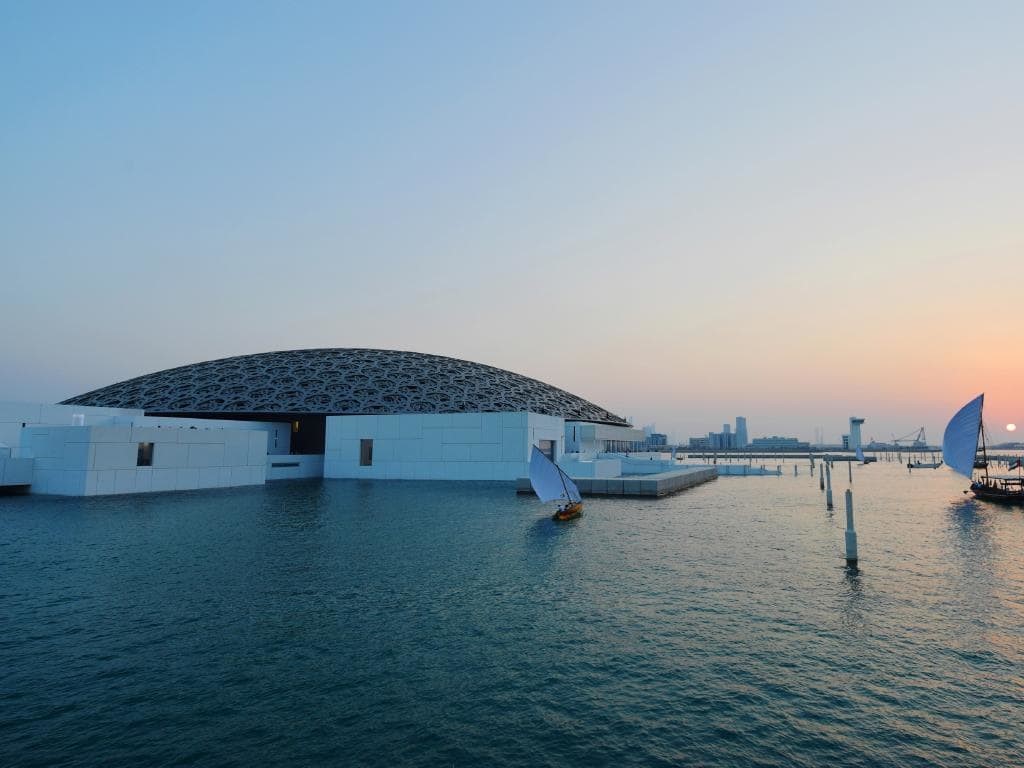
The Louvre Abu Dhabi, for instance, has graced the UAE since 2017. The € 600m complex covers some 24,000 square meters in Abu Dhabi’s Saadiyat Cultural District, and one of its principal goals is to forge a new kind of museum experience – one that is transnational, and eschews the usual, assumed divisions between East and West.
It’s not alone.
The Saadiyat Island plans also include the Guggenheim Abu Dhabi, a 30,000 square meter complex designed by Pritzker prize-winning architect Frank Gehry. The Abu Dhabi government, working with the Guggenheim curators, has been collecting major works by modern and contemporary artists for the past decade, from the Middle East and across the world, in preparation for this vast future museum.
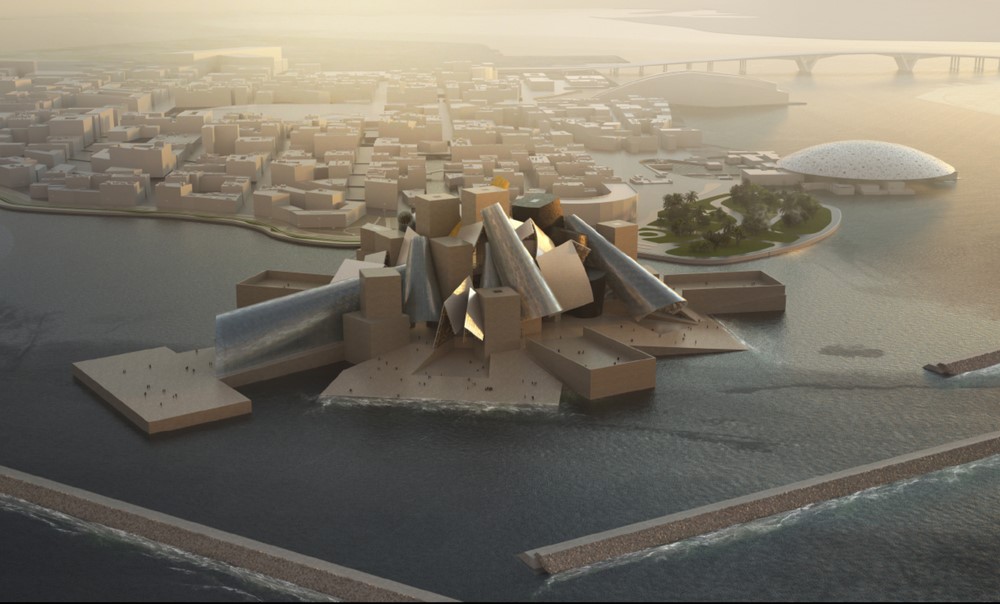
It’s part of an emerging trend, with the region’s other cultural highlights also growing in stature every year: take Saudi Arabia’s King Abdulaziz Center for Culture in Dhahran, for example: this mega-complex, designed by Norwegian architects Snohetta, includes an array of museums within the museum, plus libraries and multimedia venues.
Commenting on the escalation of arts within the Gulf States, commentator and founder of Barjeel Foundation, Sultan Suood Al Qassemi wrote:
“An old Arab saying goes, ‘Cairo writes, Beirut publishes and Baghdad reads.’ These three capitals, along with Damascus, were long the hubs of culture and education in the Arab world. However, over the past few years, as these traditional Arab capitals became more embroiled in civil strife, a new set of cities started to emerge in the Gulf, establishing themselves as the new centers of the Arab world.” [1]
Beyond the traditional arts, the wider cultural canvas is also re-energized. From the early 2000s, a series of film festivals in the UAE and Gulf tracked, boosted and showcased cinema from the Arab world. Until recently, the Dubai International Film Festival led the field; it is currently on hold, but just last month, Saudi Arabia announced the Red Sea festival, due to debut in spring 2020 in Jeddah. That most cultural of cities, Sharjah, has held its arts biennial since 1993, and recently gave similar boost to the regional – and global – literature scene, winning the accolade of World Book Capital 2019.
With world-class exhibition opportunities fostering a greater appreciation of the arts, notable figures have established global reputations.
Ahmed Mater is perhaps Saudi Arabia’s most prominent artist. Working in a variety of media, his art spans photography, calligraphy, painting, installation, performance and video. He also wears an administrative hat, advising the government on its expansive plans to boost the arts sector.
Mater’s countryman Abdulnasser Gharem gained commercial fame when his sculpture Messenger/Message sold for US$ 842,500 at an auction in Dubai in 2011. He has since become known as an instigator of arts education in the Kingdom, helping to nurture the next generation of emerging artists. When Art Jameel opened its first hub in Dubai last November, the programing team opted to focus some of the exhibitions on women artists from across the region and the world. Saudi pioneer Maha Malluh, featured in one of the Jameel Arts Centre’s solo shows, won plaudits for her bold, monumental installations made from cooking pots, cassette tapes, bread-kneading trays and chinco plates, among other, everyday materials.
Kuwaiti film-maker Monira Al Qadiri, Jordanian audio artist Lawrence Abu Hamdan, Saudi writer Raja’a Alem (winner of the Arabic Women’s Creative Writing Prize in 2005 [2]) and Kuwaiti author Saud Alsanousi (whose novel The Bamboo Stalk won the IPAF prize in 2013 [3]) are also busy breaking new ground and achieving global recognition for their contribution to the cultural kaleidoscope.
All of which is merely a snapshot of a broader creative trajectory, one set to inspire hearts and minds across the Middle East and beyond long into the future.
Empowering creativity, breaking down borders
International audiences are gradually becoming aware of the depth and breadth of Middle Eastern creative tradition and talent – better late than never. Meanwhile, it’s the visual artists, designers, writers, filmmakers and architects who are redefining perceptions of the region, both locally and globally. The Jameel family has a proud tradition, three generations in, of supporting culture and creativity, alongside job creation, education and social welfare. Art Jameel has been part of the movement to nurture creativity since 2003; today we see audiences globally as well as locally enjoying the work of Middle Eastern artists, and in turn, gaining a deeper understanding of this complex, nuanced and richly historical region.
Art Jameel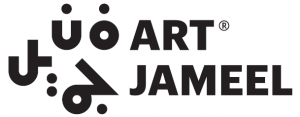 , founded by the Jameel family, – supports culture and creativity via its institutions, including the Jameel Arts Centre, Dubai, and the forthcoming Hayy Jameel in Jeddah. The organization’s work includes art exhibitions and commissions, heritage institutes and preservation, and a range of education activities, all aiming to harness the power of creativity to nurture open, connected communities.
, founded by the Jameel family, – supports culture and creativity via its institutions, including the Jameel Arts Centre, Dubai, and the forthcoming Hayy Jameel in Jeddah. The organization’s work includes art exhibitions and commissions, heritage institutes and preservation, and a range of education activities, all aiming to harness the power of creativity to nurture open, connected communities.
Integral to this is engaging the passion of all people, whatever their background or age.
Antonia Carver, director of Art Jameel since 2016, has noted a “swell in young people coming into the arts, along with the more established generation who now have the space to make work that reflects their own realities and is true to their experience.” [4]
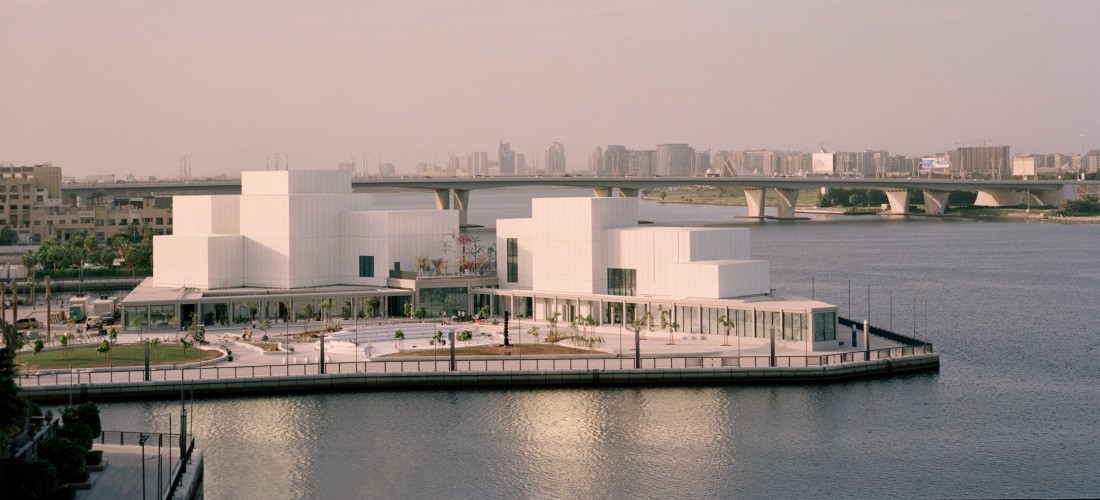
Day by day, project by project, Art Jameel continues to innovate and invest. One of its flagship ventures, the Jameel Arts Centre, located in Jaddaf Waterfront, Dubai, opened in November 2018. Its purpose is to display contemporary art to the public and encourage wider involvement through learning, research and commissions.
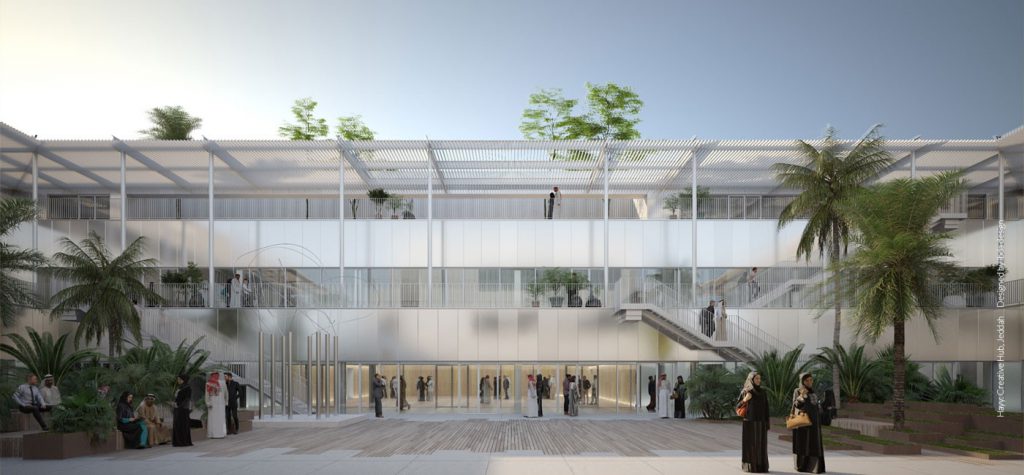
Looking ahead, the landmark Hayy Jameel, a focus for the creative industries in Jeddah, Saudi Arabia, will open in 2020. The 17,000 square meter center will feature art and design galleries, an independent cinema, performance and events spaces, artists’ studios, co-working spaces and cafes. As for that name? Hayy is the Arabic for ‘neighborhood’ – truly reflecting the complex’s community-oriented mantra of arts-for-all.
Collaboration is at the heart of art, and is thus reflected in Art Jameel’s international ethos, where creativity is embraced as a tool for breaking down borders. As such, major partnerships have been forged to further Art Jameel’s goals, including with the Metropolitan Museum of Art in New York, the Prince’s Foundation School of Traditional Arts, Delfina Foundation, and the Victoria & Albert Museum (V&A), all in London.
Commenting on the Jameel Arts Centre and Hayy Jameel, Antonia Carver explained they intended to attract a broad spectrum of visitors, both residents and tourists, adding:
“We’re aiming for the two centers to be critically aware and put on the kinds of exhibitions that dialogue with our international counterparts, while appealing to a wide public. In the UAE, that public is fantastically diverse and generally interested in discursive work that raises debate.” [5]
A prize example of artistic patronage
The Jameel Arts Centre and Hayy Jameel are just the latest chapters in Art Jameel’s success story – a story which began with its founding in 2003 as part of Community Jameel. Art Jameel promotes contemporary art, cultural heritage protection, and creative entrepreneurship across the Middle East, North Africa, Turkey and beyond.
A central pillar to Art Jameel’s mission is supporting new, groundbreaking artists from within the region. That’s why in 2009 and in partnership with the Victoria and Albert Museum, Art Jameel established the biennial Jameel Prize for contemporary art, architecture and design inspired by Islamic tradition.
The V&A explains that the prestigious award aims to “explore the relationship between Islamic traditions of art, craft and design and contemporary work as part of a wider debate about Islamic culture and its role today.” [6]
First awarded in 2009, the £25,000 contest – open to artists and designers from any ethnic, religious or cultural background – has already helped pivot the spotlight towards emerging talent. The debut award went to Iranian-born Afruz Amighi for her work ‘1,001’ Pages, a shadowpiece created by stencil burners on porous plastic sheets of the kind used in refugee tents. Amighi’s works are now exhibited around the world and in 2011 she claimed the New York Foundation for the Arts Scholarship in Sculpture.
Two years later Algerian Rachid Koraïchi scooped the Jameel Prize for his embroidered cloth banners ‘Les Maitres Invisibles’, using symbols and ciphers from a range of languages to explore the lives of the 14 great mystics of Islam. His latest work, ‘Les Maitres du temps’, a collection of blue and white canvases exploring our connections to the Earth as a source of life, has drawn admiring crowds at the October Gallery in London.
In 2013 it was the turn of Turkish fashion label Dice Kayek (sisters Ece and Ayşe Ege) for ‘Istanbul Contrast’, a collection of garments evoking Istanbul’s architectural and artistic heritage. Dice Kayek now has its own fashion store in the couture capital of the world, Paris.
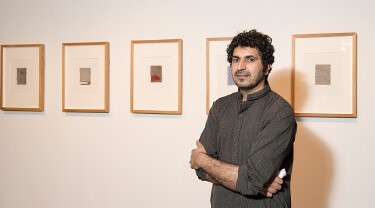 Pakistan’s Ghulam Mohammad triumphed in 2016 for his five paper collages, four untitled and one known as ‘Gunjaan’.
Pakistan’s Ghulam Mohammad triumphed in 2016 for his five paper collages, four untitled and one known as ‘Gunjaan’.
Fady M. Jameel, President of Community Jameel International and Chairman of Art Jameel, said that by incorporating second-hand books in his pieces, “Mohammad’s intricate collages of paper cuttings of Urdu script pasted on Wasli paper create new meanings and celebrate the great heritage of Islamic art, craft and design.” [7]
The most recent talents honored by the Jameel Prize were 2018’s joint winners, Iraqi artist Mehdi Moutashar and Bangladeshi architect Marina Tabassum. Mehdi was hailed for his works of minimalist abstraction rooted in Islamic geometry; Marina for her visionary Bait ur Rouf mosque. Their work was showcased along with six other finalists at the latest Jameel Prize exhibition, which opened in 2018 at the Jameel Arts Centre in Dubai, inaugurated in the presence of Her Excellency Noura bint Mohammed Al Kaabi, Minister of Culture and Knowledge Development, Nicholas Coleridge CBE, Chairman of the Victoria and Albert Museum (V&A), along with Fady M. Jameel. That exhibition runs until September 2019.
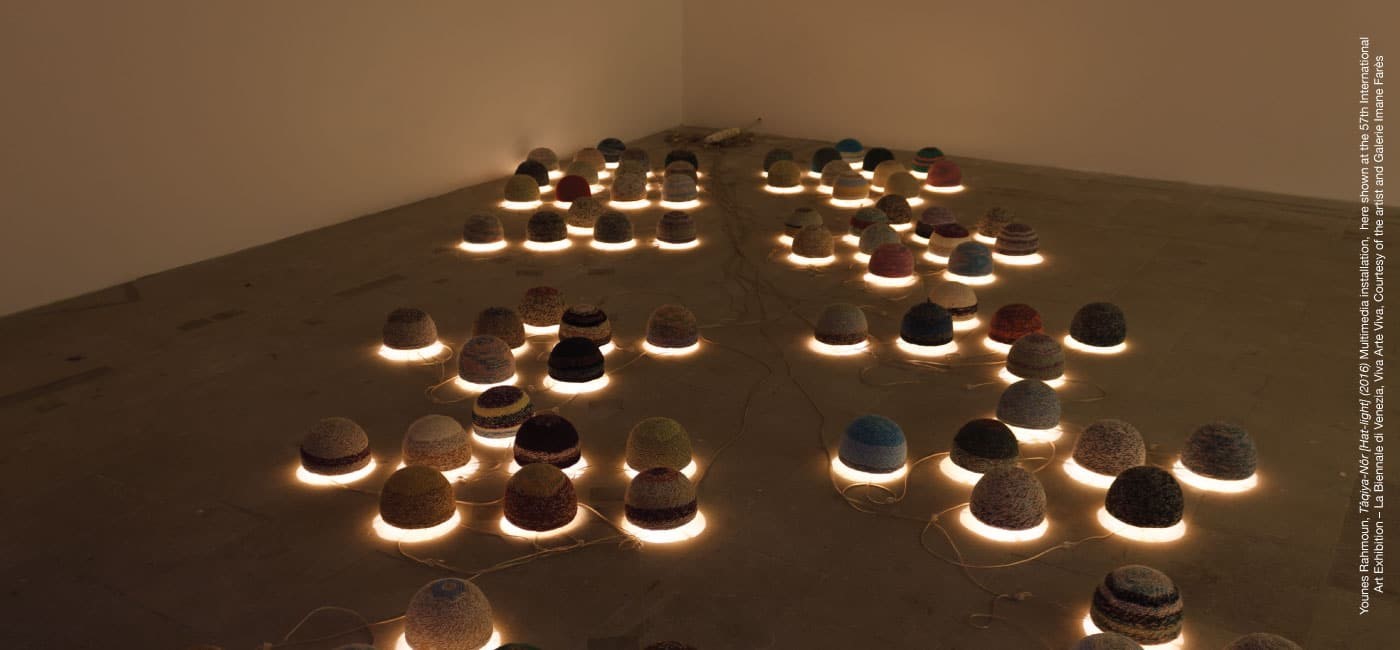
Always looking to the future, Art Jameel has recently announced a landmark partnership with London’s Delfina Foundation. Merging Delfina’s expertise in running arts residences with Art Jameel’s strategic thinking, projects will include co-commissions, exhibitions, and events.
As part of the arrangement, Fady M. Jameel commented that the two organizations shared “an ethos that is artist-centric and that is committed to the exceptional power of the arts to generate ideas and facilitate exchange – between practitioners, between artists and audiences, and between contrasting disciplines and schools of thought.” [8]
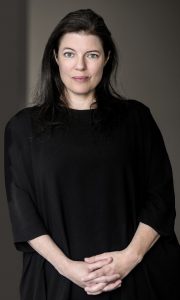 Inspired by the region’s past and present shining stars, new voices will continue to emerge from this irrepressibly creative hive – voices that will provoke discussion in every corner of the globe, and perhaps redefine the very essence of Middle Eastern art.
Inspired by the region’s past and present shining stars, new voices will continue to emerge from this irrepressibly creative hive – voices that will provoke discussion in every corner of the globe, and perhaps redefine the very essence of Middle Eastern art.
Antonia Carver has expressed her hope that visitors discovering Middle Eastern and Islamic art at partner museums around the world will “encounter the dynamic, thought-provoking work of ‘our’ artists and perhaps rethink any assumptions they may have about this part of the world”. [9]
[1] http://sultanalqassemi.com/articles/thriving-gulf-cities-emerge-as-new-centers-of-arab-world/
[2] https://stepfeed.com/10-modern-arab-writers-who-are-proving-that-arabic-still-matters-2247
[3] https://arabicfiction.org/
[4] http://artbahrain.org/wp2017/antonia-carver/
[5] http://artbahrain.org/wp2017/antonia-carver/
[6] https://www.vam.ac.uk/info/jameel-prize





 1x
1x

 Added to press kit
Added to press kit


